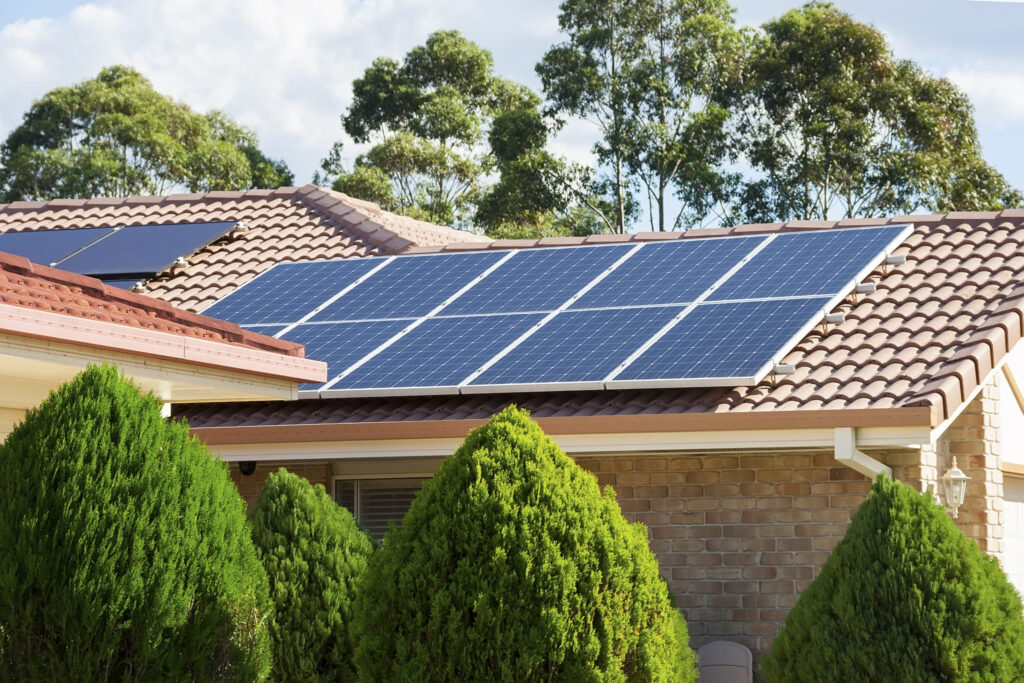Household photovoltaic (PV) panels, commonly known as solar panels, can be installed in various locations on or around a residential property. The most common installation locations include:
- Roof-Mounted Systems:
- On the Roof: Roof-mounted solar panels are the most common and space-efficient option for residential installations. They can be installed on the existing roof structure, either integrated into the roof (integrated solar tiles) or mounted on top of it. This minimizes the use of additional land space and takes advantage of the available rooftop area.
- Tilted or Flat Roof: Solar panels can be mounted at an angle on tilted roofs or installed parallel to flat roofs using racking systems. The tilt angle is often adjusted to maximize sunlight exposure and optimize energy production.
- Ground-Mounted Systems:
- In the Yard or Garden: For properties with sufficient land space, ground-mounted solar panel installations are an option. These systems involve placing the solar panels on racks or mounts in the yard or garden, usually facing south or southwest to capture maximum sunlight.
- Solar Carports: Some homeowners choose to install solar panels on structures like carports or pergolas, providing dual functionality by generating electricity while also providing shade for vehicles or outdoor spaces.
- Building-Integrated Photovoltaics (BIPV):
- Solar Windows and Facades: Building-integrated photovoltaics (BIPV) involve integrating solar panels into the building structure itself. This can include solar windows, solar shingles, or solar facades, allowing for aesthetically pleasing and seamless integration with the architectural design of the home.
- Tracking Systems:
- Solar Trackers: While less common in residential installations due to their complexity and cost, solar tracking systems can be used to adjust the angle of solar panels throughout the day, ensuring that they face the sun directly. This optimization can increase energy production, but it requires more space and maintenance.
- Off-Grid Installations:
- Some residential properties, especially in remote or off-grid locations, may have solar panels installed as part of an off-grid system. These systems are designed to provide electricity independently of the main power grid and may include energy storage solutions like batteries.
The choice of installation location depends on factors such as available space, local regulations, aesthetics, shading considerations, and the homeowner’s energy needs. Before installing solar panels, it’s important to assess the site’s solar potential, consider any shading issues, and ensure compliance with local building codes and regulations. Additionally, the orientation and tilt of the panels should be optimized to capture the maximum amount of sunlight throughout the day and across seasons.


